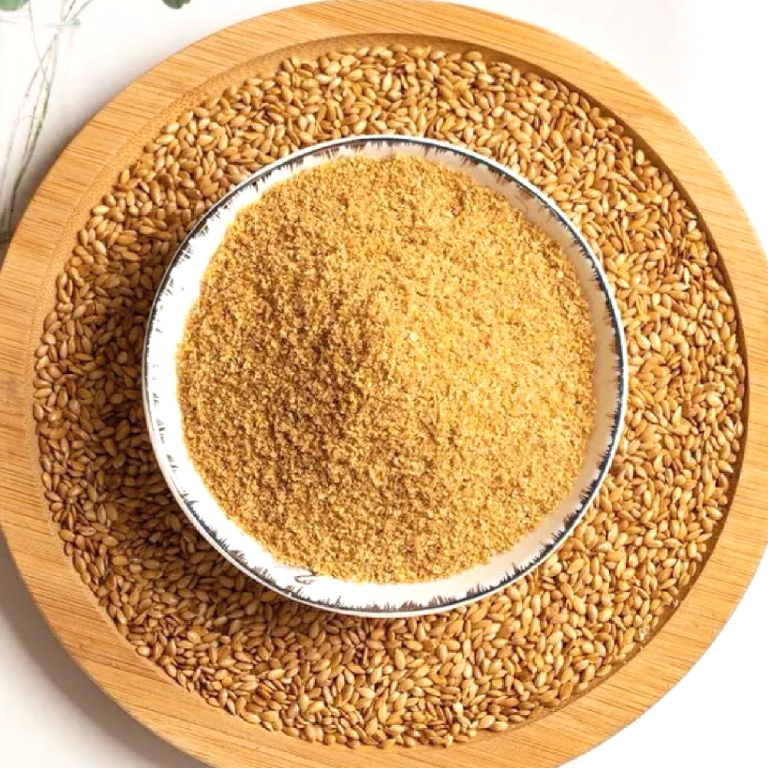Flaxseed vs Hemp Seed
In the growing market for functional seeds, Leinsamen (Linum usitatissimum) und hemp seed (Cannabis sativa L.) stand out as two nutrient-dense crops used widely in the agriculture and food industries. Though often marketed similarly for their omega-3 content and protein benefits, these seeds differ significantly in composition, processing, application, and market positioning.
Here we make a comparison between flaxseed and hemp seed, supported by data, literature, and industrial relevance, aiming to assist producers, processors, and buyers in making informed sourcing and product development decisions.
1. Definition and Origin
Flaxseed (Linum usitatissimum)
Flaxseed, also known as linseed, is cultivated globally for both oil and fiber production. It originated in the Middle East but is now widely grown in Canada, China, India, and Russia. Canada is currently the largest exporter, producing over 900,000 metric tons annually (StatCan, 2022).
Major uses: flaxseed oil, flaxseed powder, defatted flax meal, lignan extracts
Processing: cold-pressing, solvent extraction, grinding, roasting
Main outputs: food-grade oil, dietary supplements, bakery-grade powder, industrial oils

Hemp Seed (Cannabis sativa L.)
Hemp seed, harvested from industrial hemp (low THC variety), is a high-protein seed with rising commercial interest. Originating from Central Asia, hemp is now cultivated in Canada, China, and parts of Europe, with a 2023 global production estimated at 175,000 metric tons (FAOSTAT, 2023).
Major uses: hemp seed oil, protein powder, dehulled hemp hearts
Processing: dehulling, cold-pressing, microfiltration
Main outputs: health oils, protein shakes, snack ingredients, cosmetics

2. Nutritional and Functional Composition Comparison
| Component | Flaxseed (per 100g) | Hemp Seed (per 100g) |
|---|---|---|
| Eiweiß | 18.3g | 31.6g |
| Total Fat | 42.2g | 49.0g |
| Omega-3 (ALA) | 22.8g | 9.3g |
| Omega-6 | 5.9g | 28.7g |
| Dietary Fiber | 27g | 4g |
| Lignane | ~300 mg (SDG) | negligible |
| Vitamins/Minerals | B1, Mg, Se, Cu | B6, Mg, Zn, Fe |
Sources: USDA (2021); Gutiérrez et al. (2015); House et al. (2010)
Functional Differences
Flaxseed is a leading source of alpha-linolenic acid (ALA) und plant lignans, with high fiber content—ideal for cardiovascular and digestive health.
Hemp seed is richer in complete proteins, containing all essential amino acids, and has a more balanced omega-6 to omega-3 ratio (3:1), beneficial for skin and muscle repair.
3. Shared Traits and Key Differences
| Aspect | Common Traits | Key Differences |
|---|---|---|
| Plant Origin | Oilseeds grown in temperate climates | Flax is older in cultivation; hemp is newer in food use |
| Omega-3 Source | Both contain plant-based omega-3 | Flax has much higher ALA; hemp is better for omega balance |
| Processing | Cold-pressed, roasted, powdered forms | Hemp requires dehulling; flax can be consumed whole or ground |
| Allergen Risk | Generally low | Both are hypoallergenic, though trace reactions exist |
| Industrial Use | Cosmetics, feed, and health food | Hemp is used in textiles, bioplastics, and protein isolates |
4. Pros and Cons
Flaxseed
Pros:
Highest ALA content among seeds
Excellent source of soluble and insoluble fiber
Rich in antioxidant lignans
Cons:
Contains cyanogenic glycosides, which need deactivation
Low protein quality compared to hemp
Sensitive to oxidation if not stored properly
Hemp Seed
Pros:
High-quality complete protein (Edestin + Albumin)
Excellent amino acid profile
Balanced fat composition, skin health benefits
Cons:
Lower omega-3 concentration than flax
Processing (dehulling) adds cost
Regulatory confusion in some countries due to the cannabis association
5. Deep-Processed Product Applications
Flaxseed
Raw material: whole flaxseed, golden/brown types
Food-grade: flaxseed oil, milled flax, roasted flax powder, lignan extract
Industrial use: linoleum flooring, printing ink, nutritional emulsifiers
Hemp Seed
Raw material: dehulled or whole hemp seed
Food-grade: hemp hearts, hemp protein powder, hemp oil
Industrial use: bio-composites, natural fibers, skincare emulsions
6. Which Is Better, Flaxseed vs Hemp Seed?
There is no single winner—the right seed depends on the end use:
For heart health, high fiberund omega-3 fortification, Leinsamen is more appropriate.
For plant-based protein enrichment, hemp seed is superior.
Food and ingredient formulators may consider blending both to balance their strengths.
As consumer demand for clean-label, plant-based ingredients rises, both flax and hemp offer functional and marketable advantages for forward-thinking agri-food companies.
References
FAOSTAT. (2023). Global hemp seed production data. Retrieved from https://www.fao.org/faostat/
Gutiérrez, C., Rubilar, M., Jara, C., Verdugo, M., Sineiro, J., & Shene, C. (2015). Flaxseed and flaxseed cake: sources of compounds for food industry. Innovative Food Science & Emerging Technologies, 25, 138–148. https://doi.org/10.1016/j.ifset.2014.12.004
House, J. D., Neufeld, J., & Leson, G. (2010). Evaluating the quality of protein from hemp seed (Cannabis sativa L.) products through the use of the PDCAAS method. Journal of Agricultural and Food Chemistry, 58(22), 11801–11807. https://doi.org/10.1021/jf102636b
StatCan. (2022). Flaxseed production in Canada. Statistics Canada.
USDA. (2021). FoodData Central. U.S. Department of Agriculture. https://fdc.nal.usda.gov/






